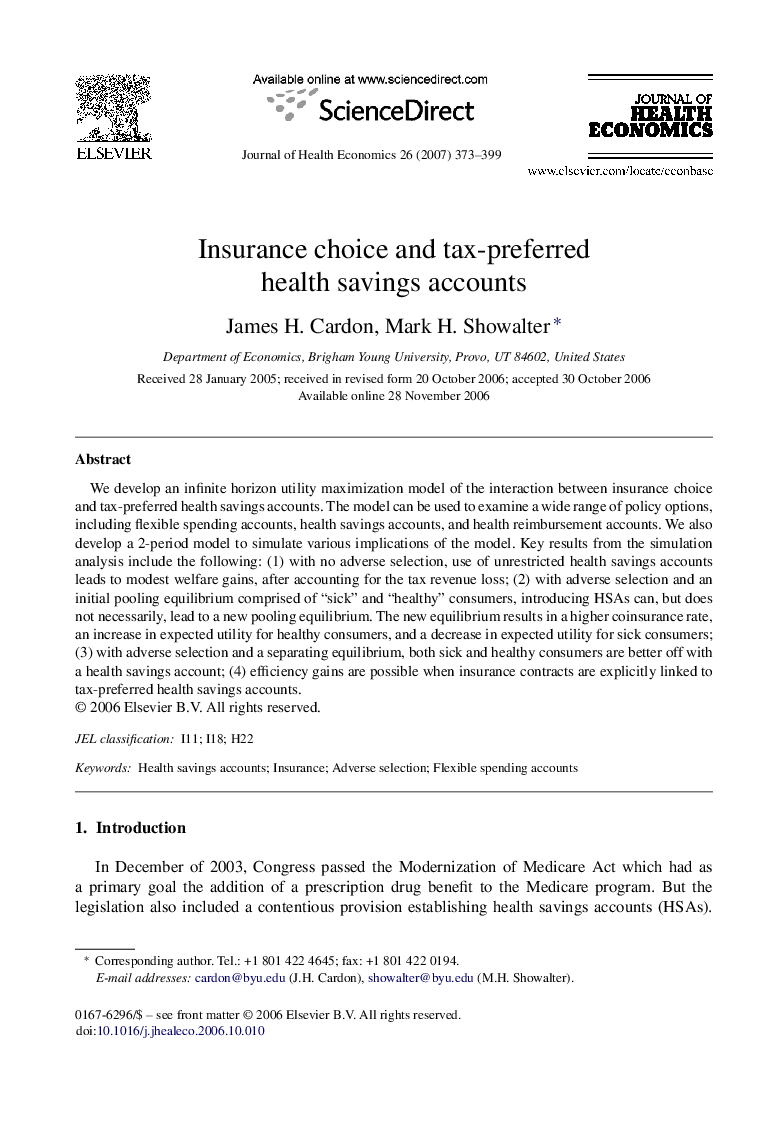| Article ID | Journal | Published Year | Pages | File Type |
|---|---|---|---|---|
| 962223 | Journal of Health Economics | 2007 | 27 Pages |
Abstract
We develop an infinite horizon utility maximization model of the interaction between insurance choice and tax-preferred health savings accounts. The model can be used to examine a wide range of policy options, including flexible spending accounts, health savings accounts, and health reimbursement accounts. We also develop a 2-period model to simulate various implications of the model. Key results from the simulation analysis include the following: (1) with no adverse selection, use of unrestricted health savings accounts leads to modest welfare gains, after accounting for the tax revenue loss; (2) with adverse selection and an initial pooling equilibrium comprised of “sick” and “healthy” consumers, introducing HSAs can, but does not necessarily, lead to a new pooling equilibrium. The new equilibrium results in a higher coinsurance rate, an increase in expected utility for healthy consumers, and a decrease in expected utility for sick consumers; (3) with adverse selection and a separating equilibrium, both sick and healthy consumers are better off with a health savings account; (4) efficiency gains are possible when insurance contracts are explicitly linked to tax-preferred health savings accounts.
Related Topics
Health Sciences
Medicine and Dentistry
Public Health and Health Policy
Authors
James H. Cardon, Mark H. Showalter,
